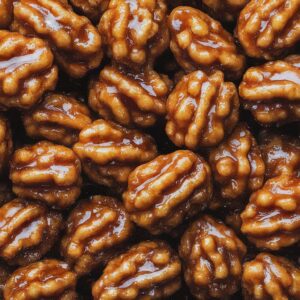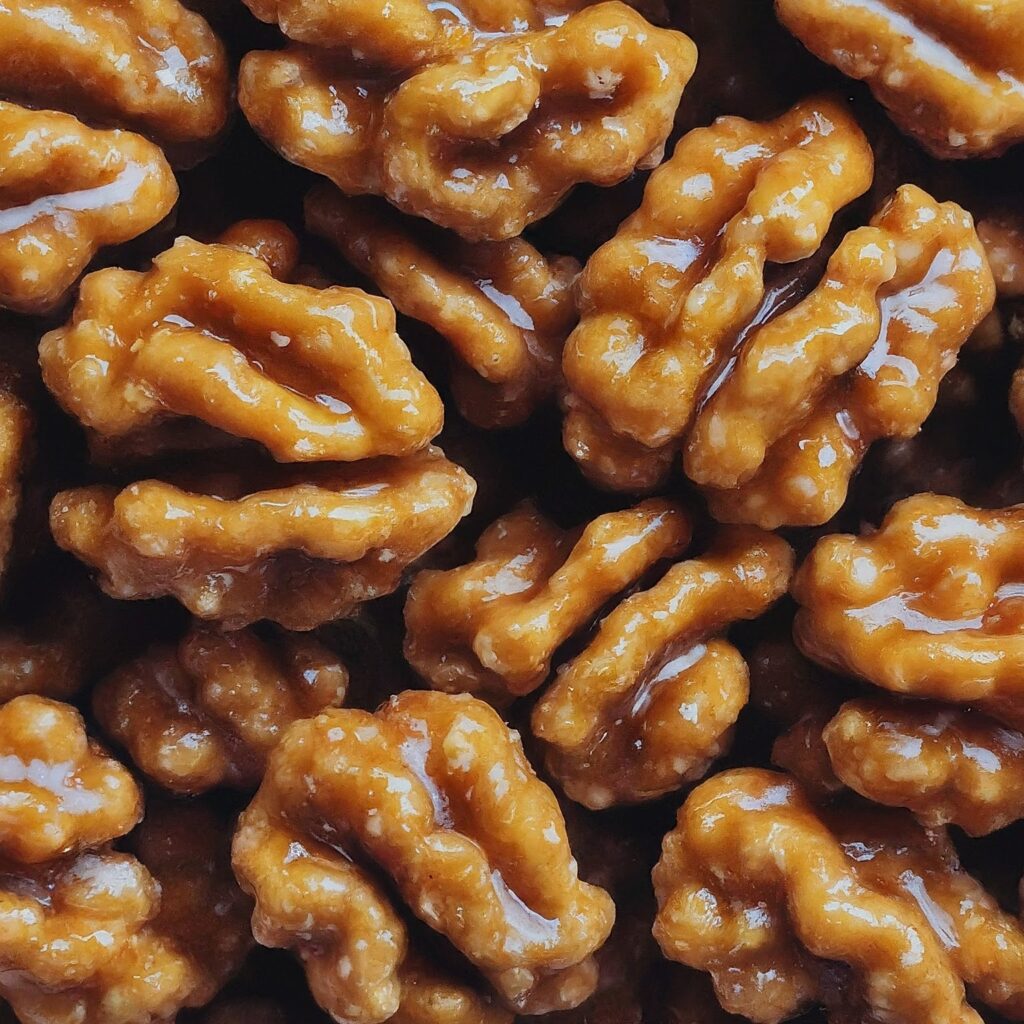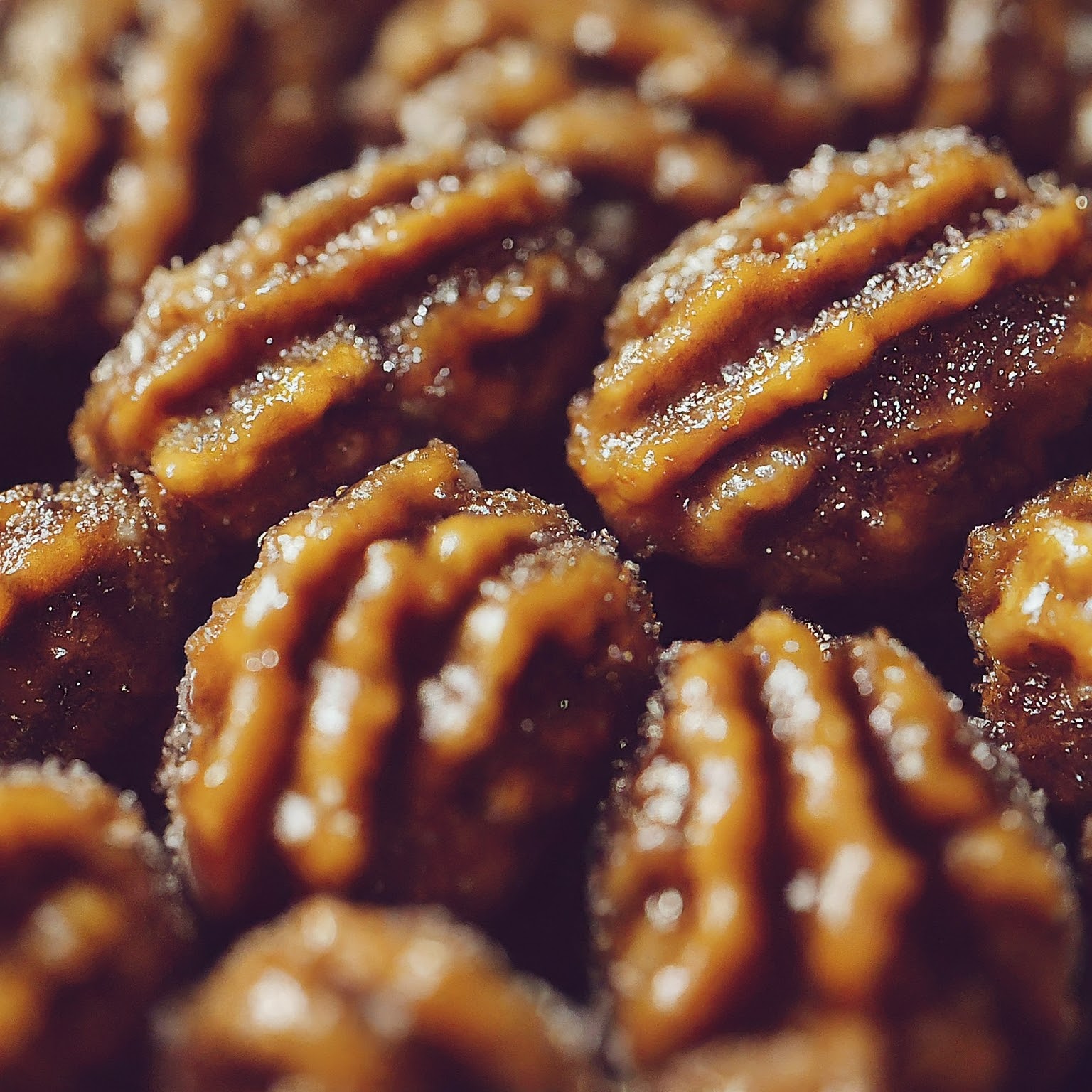Introducing Candied Walnuts—a delightful and irresistible treat that combines the natural crunchiness of walnuts with a sweet and crunchy caramelized coating. Whether you’re looking for a simple snack or a delightful topping for salads, desserts, or yogurt, these Candied Walnuts are sure to add a burst of flavor and texture to any dish. With just a handful of ingredients and a few easy steps, you can create a batch of these addictive treats to enjoy anytime. Get ready to indulge in the perfect balance of sweet and nutty flavors with these homemade Candied Walnuts!

Emerging Candied Walnuts Recipe
Equipment
- 1 Saucepan
- 1 Wooden spoon
- 1 Baking sheet
- 1 Stove
Ingredients
- 1 cup walnuts halves or pieces
- 1/2 cup granulated sugar
- 1 tablespoon unsalted butter
- 1/4 teaspoon ground cinnamon optional
- Pinch of salt
Instructions
- Heat a medium-sized skillet or saucepan over medium heat.
- Add 1/2 cup of granulated sugar to the skillet and let it melt, stirring occasionally with a wooden spoon or heatproof spatula. This will take about 3-4 minutes.
- Once the sugar has melted and turned into a golden caramel color, add 1 tablespoon of unsalted butter to the skillet. Stir until the butter is melted and fully combined with the caramelized sugar.
- Carefully add 1 cup of walnut halves or pieces to the skillet, stirring continuously to coat the walnuts evenly with the caramel mixture.
- Sprinkle in 1/4 teaspoon of ground cinnamon (optional) and a pinch of salt, stirring well to incorporate the spices into the caramelized walnuts.
- Continue to cook the walnuts in the skillet for an additional 2-3 minutes, stirring constantly to prevent burning. The walnuts should be evenly coated and fragrant.
- Once the walnuts are evenly coated and caramelized, transfer them to a parchment-lined baking sheet, spreading them out in a single layer to cool and harden.
- Allow the Candied Walnuts to cool completely before serving or storing in an airtight container.
- Enjoy your homemade Candied Walnuts as a delicious snack, salad topping, or dessert garnish!
Notes
- Adding Butter and Spices – Incorporate the unsalted butter into the caramelized sugar slowly, stirring continuously to ensure it melts evenly. Adjust the amount of ground cinnamon or other spices based on personal taste preferences.
- Coating the Walnuts – Once the butter and spices are fully incorporated, add the walnuts to the skillet gradually, stirring constantly to coat them evenly with the caramel mixture. Work quickly to prevent the caramel from hardening before the walnuts are fully coated.
how caramalized should the sugar be?

When caramelizing the sugar for Candied Walnuts, you want it to reach a golden amber color. This stage is crucial for achieving the right balance of sweetness and flavor in the finished dish. Here’s how to determine when the sugar is caramelized to the desired level:
- Color: Watch the sugar closely as it melts in the skillet. Initially, it will start as white granules and gradually melt into a clear liquid. As it continues to heat, it will begin to change color, first turning pale yellow, then golden, and finally amber.
- Aroma: Caramelizing sugar emits a sweet, rich aroma as it cooks. When the sugar reaches the desired caramel color, you’ll notice a nutty fragrance developing. This aroma indicates that the sugar has caramelized sufficiently and is ready to proceed with the next steps.
- Texture: As the sugar caramelizes, it will thicken and become syrupy. Stir the sugar gently to ensure it cooks evenly and doesn’t burn. Once it reaches the desired color, it should have a smooth and glossy texture.
- Visual Cues: Pay attention to visual cues such as bubbles forming on the surface of the caramelized sugar. When the bubbles become larger and slower, and the sugar takes on a deep golden hue, it’s a sign that the caramelization process is nearing completion.
the best walnuts to use are?
The best walnuts to use for Candied Walnuts are fresh and high-quality ones. Here are some tips for selecting the best walnuts:
- Whole Walnuts: Look for whole walnuts rather than broken pieces. Whole walnuts are fresher and less likely to be rancid or stale.
- In-Shell vs. Shelled: While in-shell walnuts can be a good indicator of freshness, shelled walnuts are more convenient for making Candied Walnuts since they require less prep work.
- Appearance: Choose walnuts that are plump, firm, and free from any signs of mold, discoloration, or insect damage. They should have a clean, glossy appearance.
- Texture: Feel the walnuts to ensure they are not soft or rubbery, which may indicate that they are stale. Fresh walnuts should have a firm texture and a crisp snap when broken.
- Smell: Sniff the walnuts to check for any off odors, which could indicate that they are rancid. Fresh walnuts should have a mild, nutty aroma.





